Related Research Articles

Paul Samuel Whiteman was an American bandleader, composer, orchestral director, and violist.
Swing music is a form of jazz that developed in the United States in the 1930s and 1940s. The name came from the emphasis on the off–beat, or weaker pulse. Swing bands usually featured soloists who would improvise on the melody over the arrangement. The danceable swing style of big bands and bandleaders such as Benny Goodman was the dominant form of American popular music from 1935 to 1946, known as the swing era. The verb "to swing" is also used as a term of praise for playing that has a strong groove or drive. Notable musicians of the swing era include Louis Armstrong, Count Basie, Cab Calloway, Jimmy Dorsey, Tommy Dorsey, Duke Ellington, Benny Goodman, Woody Herman, Harry James, Louis Jordan, Glenn Miller, Louis Prima, and Artie Shaw.
Texaco Star Theater was an American comedy-variety show, broadcast on radio from 1938 to 1949 and telecast from 1948 to 1956. It was one of the first successful examples of American television broadcasting, remembered as the show that gave Milton Berle the nickname "Mr. Television".
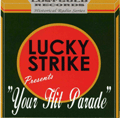
Your Hit Parade is an American radio and television music program that was broadcast from 1935 to 1953 on radio, and seen from 1950 to 1959 on television. It was sponsored by American Tobacco's Lucky Strike cigarettes. During this 24-year run, the show had 19 orchestra leaders and 52 singers or groups. Many listeners and viewers casually referred to the show with the incorrect title The Hit Parade.

Arthur Godfrey's Talent Scouts was an American radio and television variety show which ran on CBS from 1946 until 1958. Sponsored by Lipton Tea, it starred Arthur Godfrey, who was also hosting Arthur Godfrey and His Friends at the same time.
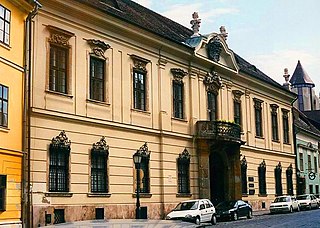
Budapest is the capital and largest city of Hungary; it has long been an important part of the music of Hungary. Budapest's music history has included the composers Franz Liszt, Ernő Dohnányi, Zoltán Kodály and Béla Bartók and the opera composer Ferenc Erkel.
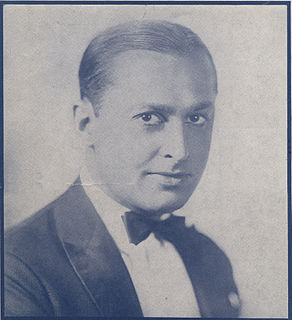
Benjamin Anzelwitz, known professionally as Ben Bernie, was an American jazz violinist, bandleader, and radio personality, often introduced as "The Old Maestro". He was noted for his showmanship and memorable bits of snappy dialogue, being part of the first generation of "stars" of American popular music, alongside other artists such as Paul Whiteman, Ted Lewis and Al Jolson.

Harrison Franklin Reser was an American banjo player and bandleader. Born in Piqua, Ohio, Reser was best known as the leader of The Clicquot Club Eskimos. He was regarded by some as the best banjoist of the 1920s.
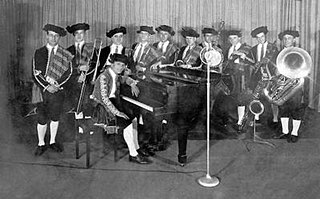
The Ipana Troubadors was a musical variety radio program which began in New York on WEAF in 1923. In actuality, the Troubadors were the Sam Lanin Orchestra. They opened the show with their theme, "Smiles."

The Clicquot Club Eskimos was a popular musical variety radio show, first heard in 1923, featuring a banjo orchestra directed by Harry Reser. A popular ginger ale, Clicquot Club, was Canada Dry's main rival. Clicquot was the name of the Eskimo boy mascot depicted in advertisements and on the product.
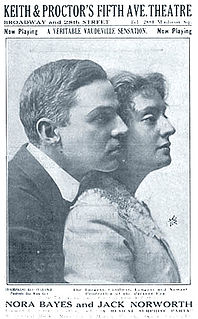
Acousticon Hour was a "musicale" radio program aired during 1927 and 1928 on NBC. It offered selections from classical music, orchestral favorites, operas and operettas.

The Chesterfield Supper Club is an NBC Radio musical variety program (1944–1950), which was also telecast by NBC Television (1948–1950).

Samuel Charles Lanin was an American jazz bandleader.
Ivan Romanoff was a Canadian conductor, violinist, arranger, and composer. For three decades he led the "Ivan Romanoff Orchestra and Chorus" on a variety of radio and television programs for the Canadian Broadcasting Corporation, on commercial recordings, and in live concerts throughout North America. As a composer he wrote a number of jingles for Canadian television and radio and incidental music for several television movies produced by the CBC. He also composed a number of songs that were written in a variety of national styles.

Frank Parker was an American singer and radio and television personality.
The Fred Allen Show was a popular and long-running American old-time radio comedy program starring comedian Fred Allen and his wife Portland Hoffa. Over the course of the program's 17-year run, it was sponsored by Linit Bath Soaps, Hellmann's, Ipana, Sal Hepatica, Texaco and Tenderleaf Tea. The program ended in 1949 under the sponsorship of the Ford Motor Company.
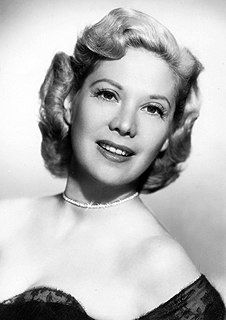
Call for Music is an old-time radio program in the United States. It was broadcast on CBS February 13, 1948 - April 16, 1948, and on NBC April 20, 1948 - June 29, 1948. The title was adapted from the sponsor's signature radio tag, "Call for Philip Morris."
The Joan Davis Show is a title applied — in some cases specifically and in other cases generically — to several old-time radio comedy programs in the United States, some of which had other distinct titles as indicated below. Comedian Joan Davis starred in the programs, all but one version of which were broadcast on CBS.
Murray Kellner was an American violinist who had a long and prolific career on records and radio from the 1920s to the 1970s as an orchestral director, session musician and arranger. He was sometimes credited as Kel Murray.

Harry Horlick was an American violinist and bandleader best known for leading The A&P Gypsies, "the first commercially sponsored musical act on radio".
References
- ↑ Sies, Luther F. (2014). Encyclopedia of American Radio, 1920–1960, 2nd Edition, Volume 1. McFarland & Company, Inc. ISBN 978-0-7864-5149-4. P. 9.
- ↑ Elizabeth McLeod Archived 2009-03-03 at the Wayback Machine
- ↑ O'Connor, Dick. "Popular Music for Orchestra."
- ↑ Guild Music: "The Golden Age of Light Music"
- Dunning, John. On the Air: The Encyclopedia of Old-Time Radio. New York: Oxford University Press, 1998. ISBN 0-19-507678-8
- Terrace, Vincent. Radio Programs, 1924–1984: A Catalog of over 1800 Shows. Jefferson, North Carolina: McFarland. ISBN 0-7864-0351-9